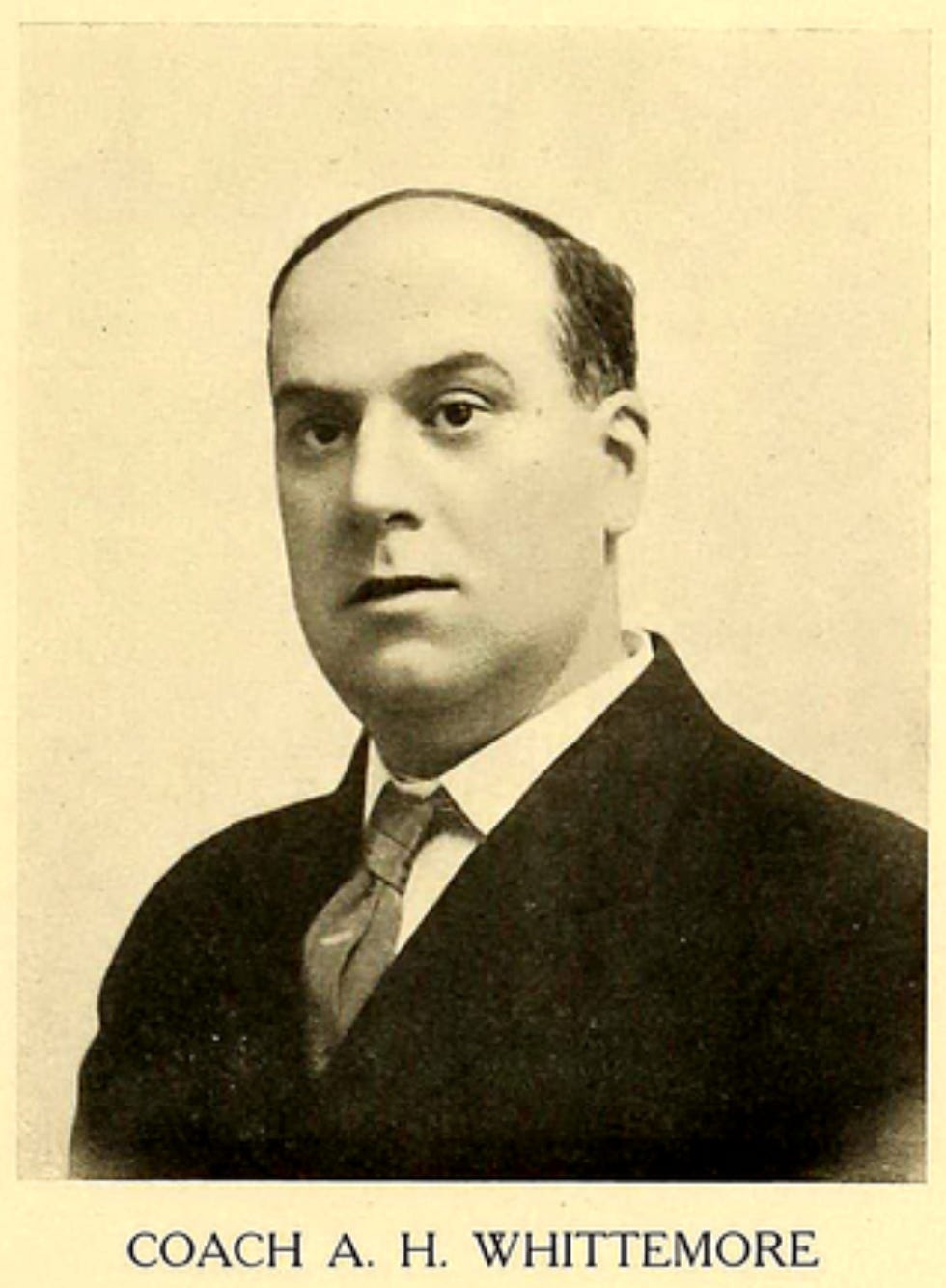Today's Factoids... Nebraska Fans Are Slappies
As discussed in the First Factoid Feast, Second Factoid Feast, Third Factoid Feast, and Fourth Factoid Feast, my searches through football history sometimes take me to topics too important to ignore but too minor to Tidbit. Such nuggets are factoids, three of which are shared with you today.
Nebraska Fans Are Slappies
Nebraska went 8-2 in 1905, getting blown out by Michigan and Minnesota while turning the tables on their other eight opponents. One of those opponents was South Dakota, then coached by Arthur Whittemore, a Brown All-American offensive lineman who patrolled South Dakota’s sidelines for several decades.
Until the 1960s, college coaches were prohibited from coaching from the sideline, as were teammates and fans. In short, the game was to be played using the brains and brawn of the players on the field, not the coach’s brain. At some point in Nebraska’s 42-6 victory, a Nebraska fan became upset at what he considered Whittemore’s coaching from the sideline. Since the officials did not penalize Whittemore for the perceived infractions, the fan took matters into his own hands by leaning over the fence and slapping Whittemore in the face.
Whittemore called for the police to take care of things before going back to observing or coaching from the sideline.
Uniforms and Team Chemistry
Back in 1926, students walking past the A. D. Smith Science building at Howard College, now Samford University, noticed the building was afire. The quick-thinking lads entered the building to save the most important materials they could get their hands on.
The four-year-old building housed the biology, chemistry, and physics departments and the football locker room. So, rather than saving lab equipment and exhibits, the students ran inside and grabbed the football uniforms.
The $50,000 building sustained $40,000 in damage, and worse, the football team lost to Mississippi College several days later, 23-10.

Deemphasizing Football
Robert Doherty became president of Carnegie Tech in the late 1930s and instituted a policy of awarding football scholarships based on the monies donated by alumni for that purpose. Unfortunately, the alumni
ran short in their funding, so the football program economized and struggled to recruit top players.
Carnegie, then and now, is a very tough school, plus it did not offer class scheduling advantages to athletes. As a result, players often had classes until 3:30 in the afternoon on weekdays and until 12:30 on Saturdays, so football practice did not start until 4:30, and home games kicked off at 2:30.
By 1948, Carnegie was in the midst of a 20-game losing streak, leading the student body to stage a protest, hanging the school president in effigy and demanding that the school “Deemphasize Doherty.” Since Carnegie is long absent from the national rankings, you can guess the impact of the protests.
Given the direction of college football’s top level, we will likely see schools competing at high levels today -as Carnegie did before the 1940s- that can no longer compete financially, so they’ll drop a level or two. As Robert Doherty saw, people will protest deemphasizing football, but every school has to choose its path.
Football Archaeology is reader-supported. Click here to buy one of my books or otherwise support the site.




